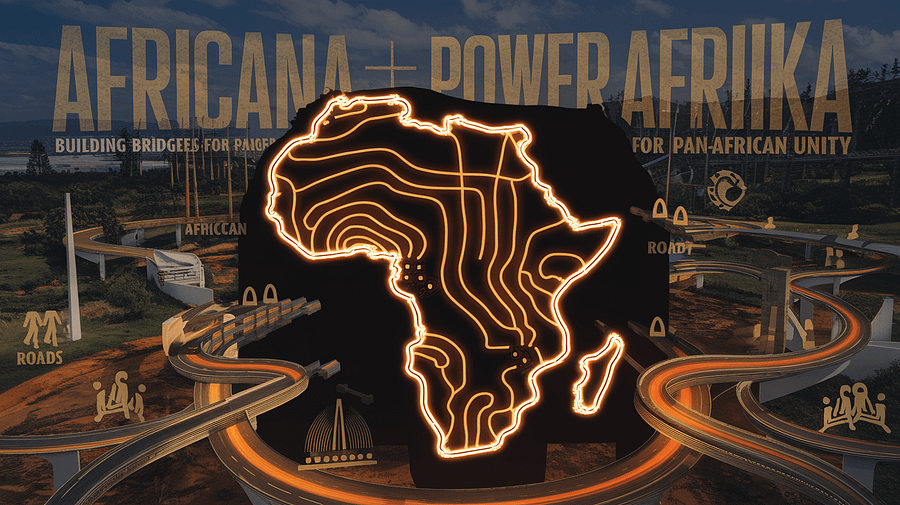
Africa’s potential has always been immense, rich in both natural resources and cultural diversity. Yet, the continent’s full potential remains unrealised, in large part due to the divisions that persist among its nations. The vision of a united Africa—one where borders are less rigid, economies are interlinked, and people move freely—remains a powerful aspiration. But how can this vision be transformed into reality? By building bridges, both literal and metaphorical, African nations can lay the groundwork for lasting unity.
The Physical Bridges: Infrastructure and Connectivity
The physical connection of African nations through efficient transportation networks, reliable communication systems, and sustainable energy sources is crucial for fostering unity. Consider the Trans-African Highway, a network of roads intended to connect the entire continent. While still a work in progress, this initiative embodies the spirit of connectivity essential for Pan-African unity. In addition, infrastructure projects like the African Union’s Programme for Infrastructure Development in Africa (PIDA) aim to improve transport, energy, and communication networks across the continent, facilitating easier movement of people, goods, and ideas.
Anecdotal examples abound. For instance, the East African Community (EAC) has made significant strides in infrastructure development, leading to increased trade and movement between member states. The region’s improved road networks and the Standard Gauge Railway have not only boosted economic integration but also strengthened the social fabric by bringing people closer together.
The Economic Bridges: Trade and Market Integration
Economic integration is another critical aspect of fostering unity. The African Continental Free Trade Area (AfCFTA), launched in 2018, is a landmark achievement in this regard. By reducing tariffs and removing trade barriers, AfCFTA aims to create a single market for goods and services across 54 African countries, ultimately enhancing economic cooperation and interdependence.
Consider the success of the Economic Community of West African States (ECOWAS), where visa-free travel policies have allowed for greater movement of people and goods. The ease of cross-border trade in the region has not only boosted local economies but also fostered a sense of shared identity among its citizens. The goal is clear: Africa should become a visa-free zone for all Africans, allowing free movement across the continent to strengthen ties and build mutual trust.
The Social and Cultural Bridges: People-to-People Connections
While infrastructure and economic policies are vital, they must be complemented by efforts to strengthen the social and cultural ties that bind African nations together. Cultural exchange programs, regional festivals, and educational initiatives can play a significant role in this regard. Imagine an Africa where students from Ghana easily study in Kenya, or where musicians from Senegal collaborate with artists in South Africa—such exchanges would not only enrich the participants but also foster a deeper understanding and appreciation of Africa’s shared heritage.
One powerful example of social integration is the Pan-African Festival of Algiers in 1969, which brought together artists, intellectuals, and revolutionaries from across the continent to celebrate African culture and discuss the future of African unity. Events like these are more than mere gatherings—they are crucibles for ideas that can drive the continent forward.
Overcoming Resistance: Navigating External and Internal Challenges
Achieving Pan-African unity will not be without its challenges. External forces, including former colonial powers and global economic players, may resist efforts to create a more integrated and self-reliant Africa. These actors have long benefited from Africa’s divisions, exploiting its resources and influencing its politics to their advantage. Therefore, Africa must navigate these challenges with strategic diplomacy, economic independence, and by forming alliances with other regions that support its goals.
Internally, the journey towards unity requires overcoming historical grievances, ethnic divisions, and the political interests of individual nations. Here, the role of visionary leadership is paramount. Leaders must be willing to set aside narrow national interests for the broader good of the continent, just as Kwame Nkrumah and other founding fathers of African independence envisioned.
Building bridges across Africa—whether physical, economic, or social—represents more than just infrastructure development or policy implementation. It is about creating a continent where unity is not just a political ideal but a lived reality. While challenges remain, the successes of regional integration efforts and the vision of Pan-Africanism provide a strong foundation upon which to build. The road to a united Africa is long, but by taking practical steps and fostering deeper connections, it is a journey worth pursuing.
Conclusion: A Vision Worth Pursuing
As citizens of this great continent, it is our duty to support initiatives that promote unity. Share your thoughts, participate in cultural exchanges, and advocate for policies that bring us closer together. Together, we can turn the vision of a united Africa into reality.
